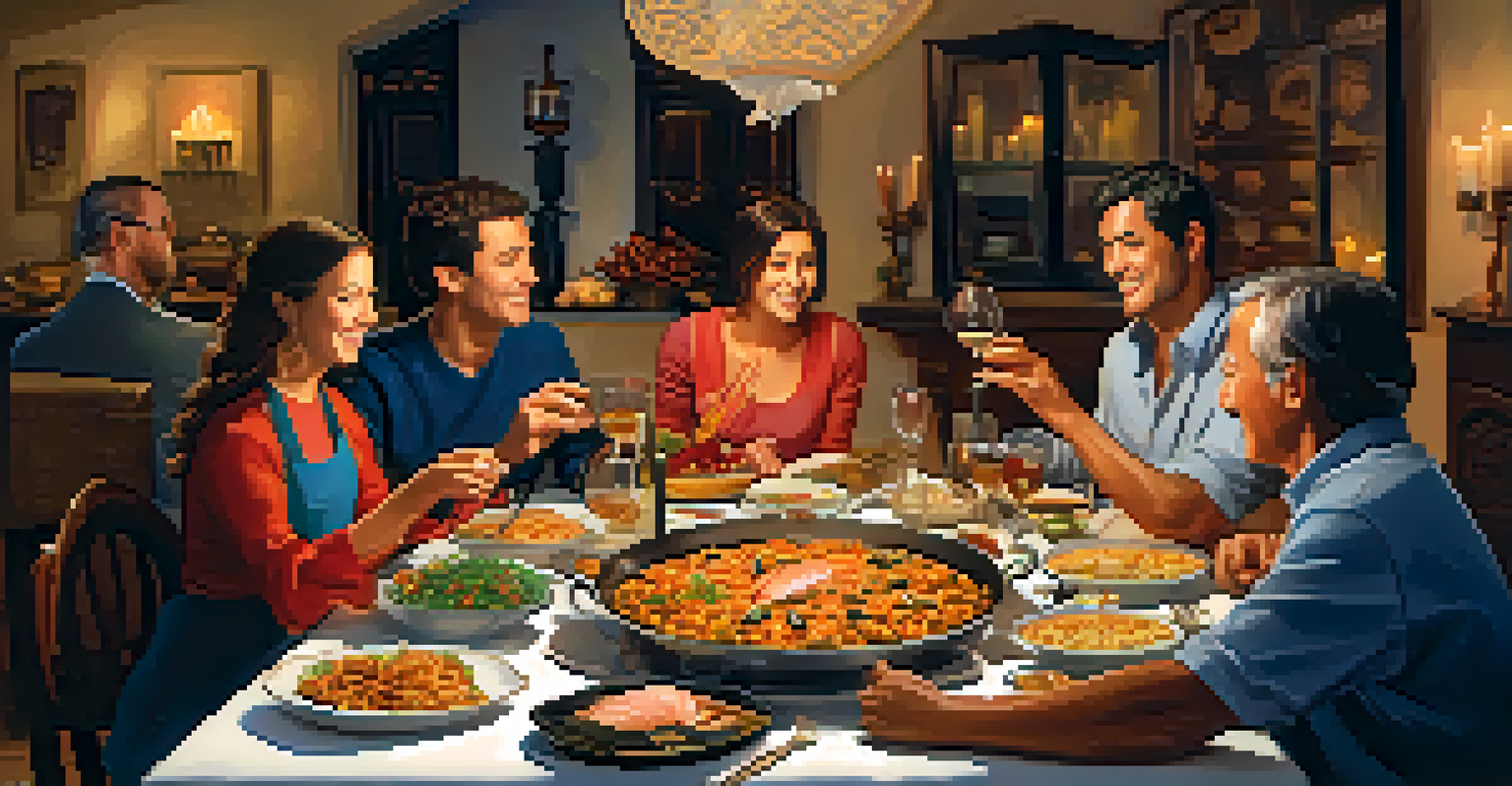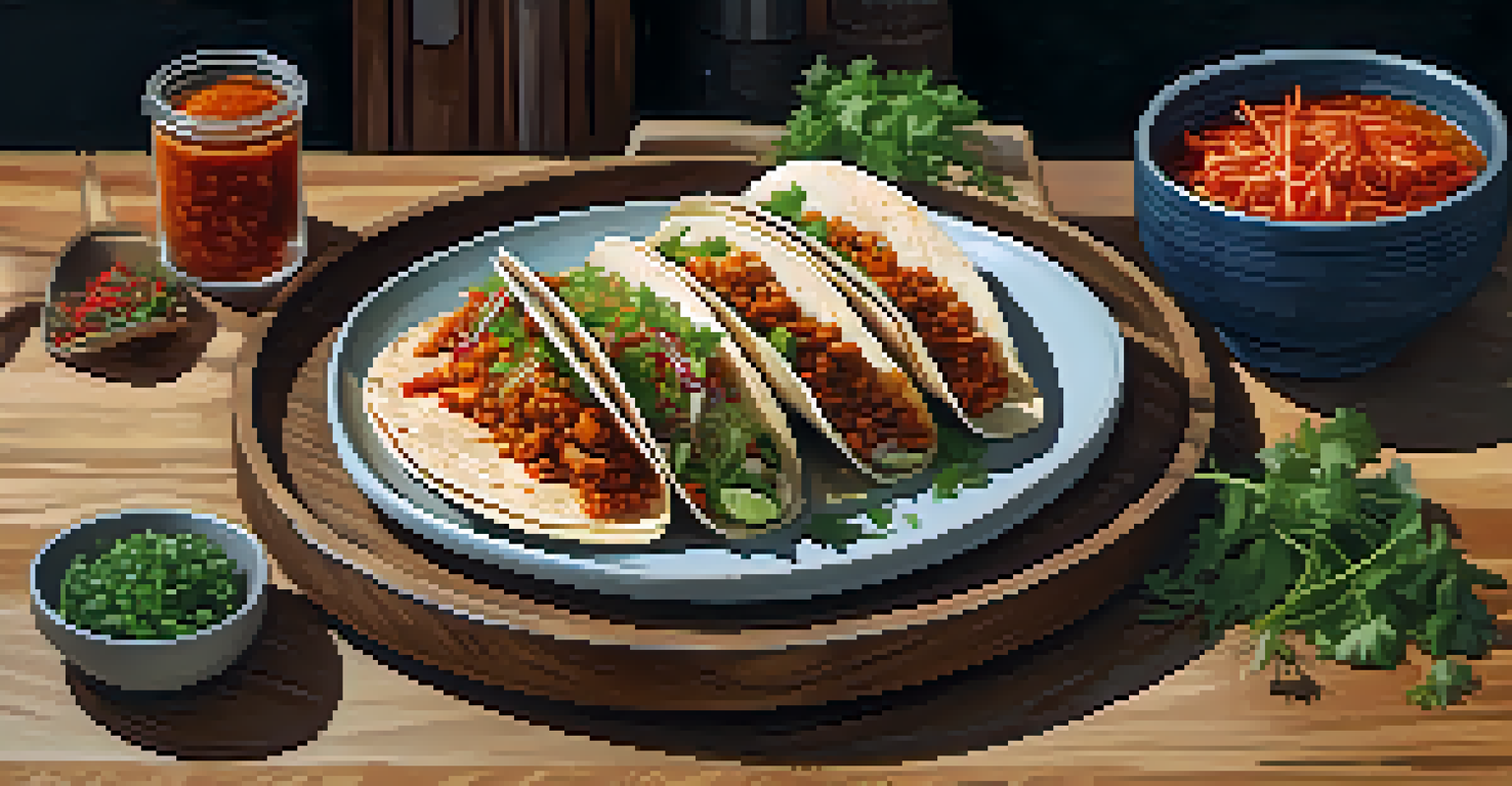Celebrating Culinary Diversity: Preserving Global Food Heritage

Understanding Culinary Diversity and Its Importance
Culinary diversity refers to the variety of cooking styles, ingredients, and traditions found across the globe. It’s a celebration of the unique flavors and techniques that define each culture's cuisine. By embracing this diversity, we not only enhance our own palates but also foster a deeper appreciation for the stories behind each dish.
Food is our common ground, a universal experience.
Food is more than just sustenance; it’s a reflection of history, geography, and social customs. Each recipe passed down through generations carries with it a piece of cultural identity. When we understand the significance of these culinary practices, we begin to see them as vital threads in the fabric of humanity.
Moreover, celebrating culinary diversity promotes inclusivity and understanding among different cultures. Sharing a meal from another culture can break down barriers and build connections, reminding us of our shared humanity despite our differences.
The Role of Food in Cultural Identity
Food plays a central role in shaping cultural identity, acting as a medium through which traditions and values are expressed. For many communities, specific dishes are tied to significant events, celebrations, or rituals, reinforcing a sense of belonging. For instance, the preparation of traditional meals during holidays can evoke nostalgia and pride.

When families gather around the table, they share stories and memories tied to the food they eat. This practice not only reinforces familial bonds but also ensures the transmission of culinary knowledge to future generations. It’s often said that the kitchen is the heart of the home, and for good reason.
Culinary Diversity Enriches Culture
Embracing culinary diversity enhances our palates and fosters appreciation for the cultural stories behind each dish.
As globalization continues to influence our eating habits, it’s crucial to recognize and preserve these unique culinary identities. By doing so, we honor the richness of our diverse backgrounds and ensure that these traditions remain vibrant and relevant.
The Threats to Global Food Heritage
While culinary diversity is something to celebrate, it faces numerous threats in today's fast-paced world. Globalization often leads to the homogenization of food, where local flavors are overshadowed by mass-produced, standardized offerings. This trend not only erases unique culinary practices but can also diminish local economies dependent on traditional food production.
Cuisine is a reflection of history and culture, a window into the soul of a people.
Additionally, modern lifestyles and urbanization can lead to a decline in home cooking and agricultural practices. As people become busier, they may turn to convenience foods that lack the cultural significance of traditional recipes. This shift not only impacts health but also the passing down of culinary knowledge.
To counteract these threats, it’s essential to raise awareness and advocate for the protection of local cuisines. By supporting local farmers, markets, and restaurants, we can help keep culinary traditions alive and thriving.
Preserving Culinary Traditions Through Education
Education plays a pivotal role in preserving culinary heritage. By teaching upcoming generations about the significance of traditional dishes, we ensure that these practices are not lost over time. Culinary schools, community workshops, and cooking classes can serve as vital platforms for sharing this knowledge.
Hands-on experiences, such as cooking with elders or participating in local food festivals, can deepen understanding and appreciation for culinary traditions. These interactive opportunities allow individuals to connect with their roots while fostering a sense of pride in their cultural heritage.
Globalization Threatens Food Heritage
The homogenization of food due to globalization risks erasing unique culinary practices and negatively impacts local economies.
Moreover, integrating food history into school curriculums can provide students with a broader perspective on world cultures. This knowledge empowers young people to explore their culinary backgrounds and encourages diverse culinary creativity in the kitchen.
Embracing Fusion Cuisine: A New Perspective
Fusion cuisine, which blends elements from different culinary traditions, offers a fresh perspective on food diversity. While some may view it as a departure from tradition, it can serve as a bridge, connecting various cultures through innovative dishes. By experimenting with flavors and techniques, chefs can create exciting new experiences that honor multiple heritages.
For example, the popular trend of Korean tacos combines the bold flavors of Korean cuisine with the familiar format of Mexican street food. This delicious hybrid not only tantalizes the taste buds but also tells a story of cultural exchange and adaptation.
However, it’s essential to approach fusion cuisine with respect and awareness. Acknowledging the origins of the ingredients and techniques used can help maintain the integrity of the cultures involved, fostering appreciation rather than appropriation.
The Role of Local Communities in Food Preservation
Local communities are often the backbone of culinary preservation efforts. By engaging in initiatives that celebrate and promote traditional food practices, these communities can ensure that their culinary heritage remains vibrant. Farmers' markets, food festivals, and local cooking competitions can serve as platforms to showcase diverse cuisines.
Community-driven projects, such as seed banks for heirloom crops or cooperative cooking classes, can also play a significant role in preserving culinary diversity. These initiatives not only protect local ingredients but also encourage collaboration and knowledge sharing among community members.
Community Efforts Preserve Traditions
Local communities play a crucial role in preserving culinary heritage through initiatives that celebrate and promote traditional food practices.
When communities come together to support their culinary heritage, they not only reinforce their cultural identity but also strengthen local economies. This collective effort can lead to a more sustainable food system that respects tradition while embracing innovation.
Celebrating Culinary Diversity: A Collective Responsibility
Preserving culinary diversity is a collective responsibility that requires the involvement of everyone—from chefs to home cooks, and food enthusiasts to policymakers. By advocating for local cuisines and supporting sustainable food practices, we can contribute to the preservation of global food heritage. Each meal we choose to enjoy has the power to honor tradition and culture.
As we explore new cuisines, let’s approach them with curiosity and respect, recognizing the stories and people behind each dish. Sharing meals from different cultures can foster understanding and appreciation, creating a more inclusive world.

Ultimately, celebrating culinary diversity enriches our lives and helps us connect with the global community. By embracing and preserving these diverse culinary traditions, we ensure that they continue to thrive for generations to come.